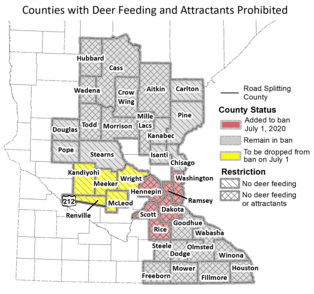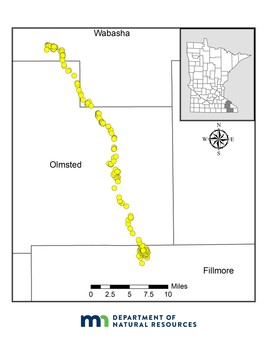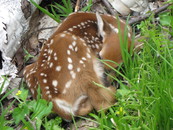|
June 25, 2020
In this issue, we have multiple study updates, details on the expanding deer feeding and attractant bans, notes on the 2019 season harvest report, summaries from the spring deer open houses and a reminder to leave fawns alone when they're on their own.
Deer hunting season information
We hope you’re staying safe and are looking forward to future hunting seasons. Currently, there are no changes to upcoming hunting season dates. As with any evolving situation, this is subject to change, so stay tuned to the DNR channels (including the DNR’s COVID-19 response webpage, through social media and also in this newsletter) for any adjustments.
As we move closer to the deer hunting season, it’s also a good time to talk about how the outdoors are for all. We encourage you to do your part to keep the outdoors safe and welcoming to everyone: people of every color, people with disabilities, and of all backgrounds, genders, traditions and experience levels.
Please check out our learn-to-hunt information and share with people who might be interested in trying hunting out: it’s available for anyone who wants to learn more about archery deer hunting or firearms deer hunting. For non-hunters, we also encourage people to check the DNR Recreation Compass to discover ways and places to find outdoor adventures.

Keep our deer herd healthy by following deer feeding and attractant bans
Have you heard? Starting July 1, six additional counties will be added to deer feeding and attractant bans after the discovery of chronic wasting disease in a wild deer in Dakota County. Feeding and attracting deer will not be allowed in Dakota, Hennepin, Ramsey, Rice, Scott and Washington counties. These bans are an important part of the DNR’s response to CWD — limiting close contact between deer helps prevent the spread of the fatal disease. Learn more about what you need to do to help our wild deer, and a full list of the counties included, on the deer feeding ban webpage.
|
Update: Neonicotinoid study
Thank you to all of the hunters who submitted spleens for Minnesota Deer Neonictinoid Project! Nearly 800 spleens were sent in from across the state. Check out this map to see the spatial distribution of all of the spleens.
All teeth and spleen samples are at currently at their respective labs for diagnostics and we are patiently waiting on results. We expect all diagnostic results to come in at the end of summer.
For any questions, please contact Patrick Hagen at patrick.hagen@state.mn.us or 651-395-0077.
Deer open house conversation recap
Wondering what issues came up at deer open houses earlier this year? Summaries for each area are now posted on the deer open house webpage. Stay tuned for details for how you can participate in a deer open house this August!

Update: Southeast deer movement study
DNR biologists continue to monitor the 28 deer (19 does, 9 bucks) collared in 2019 and the additional 46 fawns (27 does, 19 bucks) collared in February 2020.
Currently, DNR biologists are watching for spring dispersal of deer, which usually happens between April and July as fawns leave their birthplaces to establish their own adult home ranges. Based on past years' results, we expect that nearly half of the fawns will have moved away from their birthplaces by the end of July.
While most fawns' travels average 11 miles, some move farther. One doe fawn, collared near Chatfield this February, has moved about 30 miles so far. This week, she was tracked near Hammond. That dispersal movement is shown on this map.
Learn more and watch for updates on the newly updated study webpage.
|
2019 season harvest report now available
The full 2019 harvest report can be downloaded on the deer reports and statistics webpage. Some key takeaways:
- A total of 187,587 deer were harvested last season.
- During the inaugural statewide youth season, 5,829 deer were harvested.
- Overall, the season was very similar to the 2018 season, with comparable total number harvested and success rates. A total of 101,910 antlered bucks and 85,677 antlerless deer were harvested in 2019. There was an 8% increase in antlered buck harvest and 9% decrease in antlerless deer harvest compared to last year.

Let fawns be
Most fawns are born from mid-May to mid-June, so please avoid disturbing them. Fawns do not attempt to evade predators during their first few weeks of life. Instead, they remain still to avoid being seen. During these times, fawns are learning critical survival skills from their mothers but are often left on their own while their mothers are foraging nearby. Be assured deer fawns do fine even if they look abandoned or fragile.
|
|